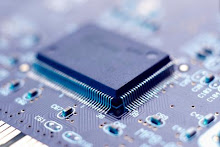
Stability has been an elusive concept for Cisco Systems over the last year. Sales have been on a jagged downward slope as the technology industry dealt with its worst downturn since the dot-com bust.But now Cisco, the world’s largest maker of network technology, says business appears to have reached a “tipping point.”
In the last three months, orders have started to arrive at a more consistent pace when measured against historical trends, said John T. Chambers, the chief executive, in an interview on Wednesday after the company released its fiscal fourth-quarter results.The orders were very good, Mr. Chambers said. It was the first normal order rate we have seen sequentially in a year.Such optimism seemed to run counter to Cisco’s fourth-quarter results, which showed just how much business spending on networking equipment has slowed. For the period ended July 25, Cisco reported a 46 percent plunge in net income to $1.1 billion, or 19 cents a share, from net income of $2 billion, or 33 cents a share, in the same period last year. Excluding charges for stock-option compensation, acquisitions and one-time items, Cisco earned 31 cents a share, beating the forecast of 29 cents a share by analysts surveyed by Thomson Reuters. Revenue fell 18 percent year-over-year to $8.5 billion, meeting analysts’ expectations. Sales of Cisco’s flagship routing and switching products fell 27 percent and 20 percent, respectively. Setting those bleak sales figures aside, Mr. Chambers focused on recent sales trends to support his hopes for better results ahead. The $8.5 billion in revenue, for example, was Cisco’s first quarter-to-quarter sales increase in a year. In addition, the increase in orders from the third quarter to the fourth quarter matched past trends, leading Mr. Chambers to characterize the business as more stable. Looking ahead, Cisco expects its first-quarter revenue to come in 15 to 17 percent below the $10.3 billion it reported last year. But even with such declines, Cisco would report quarter-to-quarter growth once again.On a global basis, we are starting to see potential positive trends in Asia-Pacific, the U.S., emerging markets and Japan, Mr. Chambers said. He added that selling equipment in Europe remained difficult.Despite those positive signals, Mr. Chambers, known for his upbeat demeanor, cautioned that a recovery was not guaranteed. “No one knows for sure when the recovery will occur, he said. “You would like to see a couple more quarters of the trends we saw before talking about that.Cisco has cut more than 2,000 jobs over the last year, but on Wednesday, the company declared an end to layoffs. Analysts saw this as a crucial indicator that Mr. Chambers thought Cisco had reached bottom.Effectively we have a new plateau, and moving forward, things appear to be behaving roughly the way they should, said Sam Wilson, a communications analyst for JMP Securities.In the midst of the economic downturn, Cisco has charged into several new markets, including computer servers for businesses and video recorders for consumers. The company is attacking 30 new businesses and could increase that, Mr. Chambers said. For the year, revenue fell 9 percent, to $36.1 billion, and profit dropped 24 percent, to $6.1 billion. Cisco finished with $35 billion in cash — one of the largest hoards in the technology industry.
By ASHLEE VANCE













